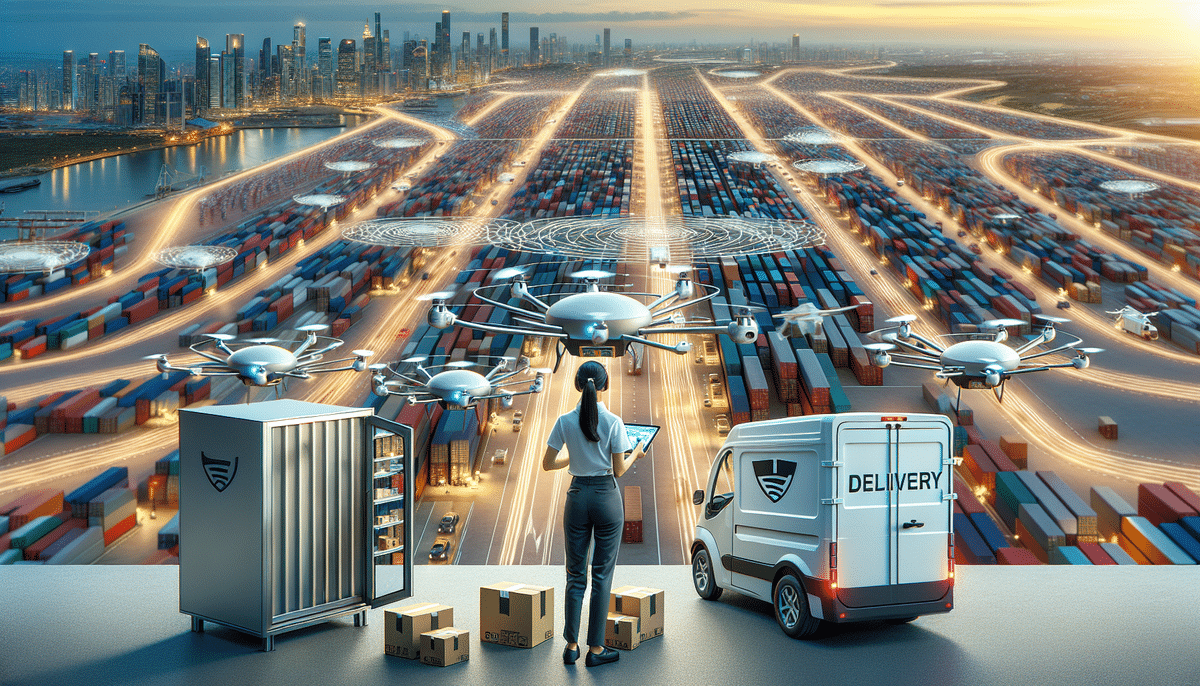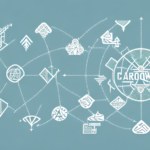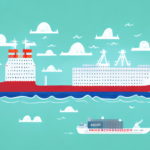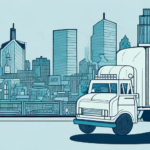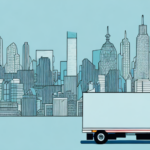Understanding Supply Chain Shortages and Last Mile Delivery
The ongoing Covid-19 pandemic has significantly strained global supply chains, resulting in empty shelves, extended delivery times, and rising costs of goods. This disruption has led household consumers to focus increasingly on the last mile delivery experience. But what exactly are supply chain shortages and last mile deliveries?
What are Supply Chain Shortages?
A supply chain shortage occurs when the flow of goods from manufacturers to end-users is disrupted due to factors such as natural disasters, trade wars, or pandemics like Covid-19. According to a McKinsey report, global supply chains were disrupted by an estimated $2.5 trillion in value in 2020 alone.
Defining Last Mile Delivery
The last mile refers to the final leg of the supply chain—the journey from transportation hubs or warehouses to the end-user's doorstep. This stage is crucial for ensuring timely and intact delivery of goods. With the rise of e-commerce, efficient last mile delivery has become a key differentiator for businesses aiming to enhance customer satisfaction.
Rising Demand for Last Mile Delivery Services
The Covid-19 pandemic has significantly boosted the demand for last mile delivery services. With more people working from home due to lockdowns, online shopping and home delivery services have surged. The convenience of doorstep deliveries appeals to consumers looking to avoid physical stores.
Factors Driving Increased Demand
- Acceleration of e-commerce growth: The pandemic led to a 22% increase in global e-commerce sales in 2020.
- Changing consumer behaviors: Increased preference for online shopping over traditional retail.
- Expansion of delivery services: Companies expanding their delivery networks to meet rising demand.
Balancing Speed and Safety
Last mile delivery companies must balance swift deliveries with safety measures. Amid the pandemic, there's heightened concern for the safety of delivery personnel and customers. According to a study by the PwC Consumer Intelligence Series, over 75% of consumers prioritize contactless delivery options.
Impact of Supply Chain Shortages on Last Mile Delivery
Global supply chain shortages have made last mile delivery services both more crucial and challenging. As businesses struggle to maintain production and transportation schedules, delays and out-of-stock items have become common.
Increased Transportation Costs
Limited availability of goods has driven up transportation costs. According to the Bureau of Labor Statistics, transportation costs rose by 14% in 2021, affecting the bottom line of last mile delivery operators and leading to higher prices for consumers.
Need for Increased Flexibility
Supply chain disruptions cause unexpected delays and changes in delivery schedules. Last mile delivery operators must adapt quickly to ensure on-time deliveries, which requires high coordination and communication among all supply chain stakeholders, from manufacturers to retailers to delivery drivers.
Technological Innovations Enhancing Last Mile Delivery
Technology plays a pivotal role in improving last mile delivery services. Tools such as GPS, route optimization, real-time tracking, and automated warehouses help boost operational efficiency and reduce delays.
Advanced Tracking and Telematics
Real-time tracking systems provide customers with up-to-date information on their delivery status. According to GS1, 90% of consumers find real-time tracking important for their delivery experience.
Emerging Technologies: Drones and Autonomous Vehicles
Companies like Amazon and UPS are testing drones and autonomous vehicles to deliver packages directly to customers' doorsteps. These technologies aim to reduce delivery times and eliminate the need for human drivers, leading to cost savings and enhanced safety.
Sustainable Delivery Solutions
Technology is fostering sustainability in last mile delivery. Electric vehicles and bicycles offer environmentally friendly alternatives to traditional delivery trucks. Additionally, some companies are experimenting with delivery robots that navigate sidewalks and bike lanes for urban deliveries, reducing carbon footprints.
Challenges and Strategies for Last Mile Delivery
Meeting the escalating demand for last mile delivery presents several challenges for companies, including ensuring sufficient delivery fleets, expanding distribution capacity, and managing increased operating costs.
Ensuring Sufficient Delivery Fleets
Companies must maintain an adequate number of drivers to meet demand while adhering to safety measures. The driver shortage has been a persistent issue, with the Bureau of Labor Statistics projecting a shortage of up to 250,000 truck drivers by 2024.
Expanding Distribution Centers
To handle increased order volumes, companies need to expand their distribution centers and warehouses. This logistical hurdle is especially challenging for smaller companies with limited resources.
Managing Operating Costs
As demand rises, operating costs for last mile delivery also increase. Companies must find ways to optimize routes, improve efficiency, and leverage technology to keep costs in check.
Adopting Best Practices
Implementing best practices such as route optimization, load balancing, and real-time tracking can help companies streamline their operations. Proactive communication with customers and process automation are essential for enhancing delivery performance.
Future Trends and Predictions in Last Mile Delivery
The last mile delivery industry is rapidly evolving, with several emerging trends set to shape its future.
Urban Warehousing
Urban warehousing allows for faster and more cost-effective deliveries by situating distribution centers closer to urban customers. This proximity reduces delivery times and transportation costs.
Delivery Robots and Drones
Delivery robots and drones are becoming more feasible for everyday use, particularly for medical supplies and time-sensitive products. These technologies promise to revolutionize the industry by enhancing efficiency and reducing delivery times.
Electric and Autonomous Vehicles
The adoption of electric and autonomous vehicles is set to increase, offering sustainable and efficient delivery options. These vehicles can lower operational costs and minimize environmental impact.
Consumer Expectations and Best Practices in Last Mile Delivery
Consumers today expect last mile delivery services to be reliable, fast, and affordable. Meeting these expectations is crucial for businesses aiming to retain customers and build loyalty.
Reliability and Speed
Customers demand timely and reliable deliveries. According to a Statista survey, 56% of consumers cite speed of delivery as the most important factor when choosing a delivery service.
Real-Time Updates
Providing real-time tracking and updates on delivery status is essential. Transparent communication helps manage customer expectations and reduces dissatisfaction caused by unexpected delays.
Affordability
Affordable delivery options are crucial for retaining price-sensitive customers. Offering flexible delivery options, such as same-day or economy shipping, can cater to diverse consumer needs.
Best Practices for Enhancing Delivery Performance
- Proactive Communication: Keeping customers informed about their delivery status and any potential issues.
- Process Automation: Streamlining operations through automation to reduce manual errors and enhance efficiency.
- Customer Feedback: Incorporating customer feedback to continuously improve delivery services.
Conclusion: The Importance of Efficient Last Mile Delivery
Supply chain shortages have intensified consumer focus on last mile delivery, making it a critical component for success in the thriving e-commerce industry. Businesses must prioritize efficient and reliable last mile delivery services to stay competitive. By embracing technological innovations and adopting best practices, companies can optimize their last mile delivery operations, enhance customer satisfaction, and build a loyal customer base for the future.

